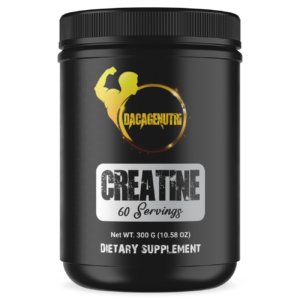The secret to maximizing an athlete’s potential lies in sports science. It is an interdisciplinary area that integrates the study of physiology, biomechanics, psychology, and nutrition. Sports science reveals a wealth of information by diving into the complexities of human performance. This knowledge may be used to improve training methods, avoid injuries, and speed up recovery for athletic excellence.
In this article, we’ll dig into the fascinating world of sports science. We will be examining its many elements and illuminating how important it is to the development of sports in the future.
The Physiology of Sports Science
“Sports science is a discipline of science that studies how the healthy human body works during exercise and how sport and physical activity promote health and performance from cellular to whole body perspectives”. The knowledge of human physiology and sports science are interconnected. How it responds to physical activity is at the core of sports science. Scientists have uncovered the principles behind muscle growth, cardiovascular conditioning, and energy systems via extensive study and cutting-edge technology.
Sports scientists have created evidence-based training programs. These programs are adapted to certain sports and individual demands by researching how the body reacts to various training stimuli.
Biomechanics: The Art of Movement
Understanding the best movement patterns and methods relies heavily on both physiology and biomechanics. The mechanics of human motion are examined, and the interactions of forces within the body during physical activity are examined. Modern motion-capture technology and force plates may be used by sports scientists to analyze and improve an athlete’s form. It is to reduce energy use and maximize efficiency. Athletes can improve their abilities and lower their risk of injury with the help of such analyses.
Psychology: Unleashing Mental Fortitude
The psychological component of sports science explores the complex mental processes that go on inside an athlete. Champions can be distinguished from contenders by their mental toughness, concentration, and resilience. To improve an athlete’s mental state and cultivate a winning attitude, sports psychologists use a variety of strategies. This includes visualization, goal-setting, and cognitive-behavioral therapies.
Sports science gives athletes the tools they need to overcome psychological obstacles. This helps them realize their full potential by tackling issues like motivation, stress management, and performance anxiety.
Fueling Athletic Excellence through Nutrition
The foundation of high-level athletic performance is optimal nutrition. Understanding the effects of macronutrients, micronutrients, and hydration on an athlete’s energy levels, endurance, and recovery has been made possible by sports science.
Sports scientists assist athletes in maximizing their feeding tactics. It promotes tissue regeneration and enhances overall performance by adjusting dietary strategies to individual demands. It provides athletes with the nutritional skills they need to succeed, from carefully calculating calorie demands to assuring correct nutrient timing.
Expanding the Boundaries of Sports Science

Innovative thoughts that redefine athletic performance are being introduced by researchers as sports science continues to advance. Let’s examine some recent advancements that might influence sports science in the future.
-
Genetic Profiling: Unlocking the Athlete’s DNA
New avenues for identifying an athlete’s genetic propensity to particular performance-related qualities have been made possible by advances in genetic science. Scientists can find gene variations linked to features like muscle fiber composition, oxygen-carrying capacity, and injury sensitivity by looking at a person’s genetic profile. An athlete’s potential may be maximized with the help of this information and customized training plans.
-
Wearable Technology: Empowering Athletes
Sports science has been transformed by the incorporation of wearable technology, such as smartwatches, fitness trackers, and heart rate monitors. Real-time information on critical parameters, including heart rate, sleep quality, and exercise intensity, is provided by these gadgets. Athletes and coaches may make data-driven decisions, avoid overtraining, and guarantee optimal recovery by monitoring and analyzing performance markers.
-
Virtual Reality: Enhancing Skill Acquisition
Sports science is promoting the use of virtual reality (VR) technology. It is notable in the areas of skill development and mental training. VR provides for mental rehearsal and repetitive practice, sharpening motor skills and decision-making abilities by submerging athletes in virtual settings. Virtual reality (VR) has the ability to completely change how athletes practice and get ready for competition. It’s capable of improving response speeds in football to honing technique in gymnastics.
-
Artificial Intelligence: Augmenting Performance Analysis
The study of athletic performance is changing thanks to artificial intelligence (AI). AI is able to analyze enormous volumes of data and derive insightful conclusions using machine learning algorithms. It enables coaches and sports scientists to make knowledgeable judgments. This, in turn, helps them optimize training plans and provide customized therapies by tracking player movement patterns and anticipating injury risks.
-
Recovery Science: The Art of Restoration
Another area where sports science is making great progress is in understanding the nuances of recuperation. Researchers are looking at numerous methods that hasten healing, lessen inflammation, and support tissue repair, from cryotherapy to compression therapy. The importance of getting enough quality sleep for an athlete’s general health is being highlighted by the growing interest in sleep research.
Top 6 Benefits of Sports Science

A wide number of subjects and approaches are included in sports science. This aims to enhance both athletic performance and general health. Sports science is a field that studies the intricate relationships between human physiology, biomechanics, psychology, and nutrition. It has several advantages for players, coaches, and sports aficionados. Let’s look at some of the major benefits of including sports science in training and performance-improving techniques.
-
Performance Optimization:
Sports science offers solutions for improving athletic performance that is supported by data. Sports scientists can modify training regimens to particular sports, positions, or individual demands. This is mainly done by studying the physiological changes that take place during exercise.
Analyzing them, sports scientists construct efficient training programs by taking into account elements like the energy systems involved, the make-up of the muscle fibers, and movement patterns. This enhances total athletic performance by improving stamina, strength, power, agility, and speed.
-
Injury Prevention:
The identification and prevention of injury hazards is one of the most important parts of sports science. Sports scientists may identify possible weak spots and create plans of action to correct them using biomechanical analysis. Injury risk can be considerably decreased by adjusting technique, addressing imbalances, and prescribing specific strength and conditioning workouts.
It also concentrates on elements like workload control, recuperation techniques, and injury rehabilitation. This enables a secure and long-lasting approach to participating in sports.
-
Individualized Training:
Sports science is aware of the significance of customized training because every athlete is different. It helps obtain important information about an athlete’s strengths, shortcomings, and areas for progress.
This is done through a variety of evaluations and measures, including physiological testing, body composition analysis, and movement screening. Using this data, customized training plans are created that focus on areas that require development. These plans ensure athletes receive the most effective and efficient training techniques that are suited to their unique needs.
-
Mental Conditioning:
The psychological side of athletic performance is covered by sports science. In order to succeed in athletics, one must have mental toughness, attention, and resilience.
Sports psychologists collaborate closely with players to create stress-reduction, focus-improvement, confidence-building, and motivation-boosting techniques. Athletes may get rid of performance anxiety, improve their mentality, and reach their maximum potential by addressing psychological impediments.
-
Nutritional Guidance:
Sports performance and recovery are fundamentally impacted by proper nutrition. Sports science, which considers elements including energy expenditure, macronutrient requirements, hydration, and nutrient timing, offers helpful insights into the nutritional demands of athletes. It aid athletes by enhancing their nutritional plans in order to support muscle growth.
Furthermore, it repairs muscles, improves body composition, and supports general health. Performance, endurance, and recovery may all be significantly impacted by using the right fuelling and hydration techniques.
-
Evidence-Based Decision-Making:
Decision-making in sports science is supported by empirical research and data-driven methodologies. Sports scientists amass a wide amount of information via in-depth experimentation, analysis, and observation. This informs training approaches, injury prevention tactics, and performance optimization plans.
The efficacy of their training and total performance is maximized. Thanks to this evidence-based approach, guarantees that athletes, coaches, and sports professionals make knowledgeable decisions that are founded on scientific principles.
The Increasing Significance of Science and Medicine

Research regarding the significance of sports science and medicine was conducted by George G. A. Pujalte. This research was published in the Journal of International Medical Research in January 2020. The aim of the study was to check the multiple benefits of exercise and sports for athletes.
The main goal was to reveal the relationship between sports science and disease management. Two health aspects were taken into account for the treatment of various diseases in athletes. Researchers have claimed that modern diseases can be treated by sports science and regular exercise. Various lifestyle changes and regular fitness exercises can reduce the risk of smoking, obesity, and myocardial infarction in athletes.
Conclusion
Sports science is a dynamic area that explains the puzzles of exceptional sports performance. Sports scientists have given players evidence-based approaches to improve performance, avoid injuries, and hasten recovery times by fusing information from several fields.
The potential to attain higher levels of athletic accomplishment increases exponentially as the discipline develops to include genetic profiling. Wearable technology, virtual reality, artificial intelligence, and recovery science are all positive aspects. Athletes may unleash their full potential and influence the direction of sports by utilizing the power of sports science.












